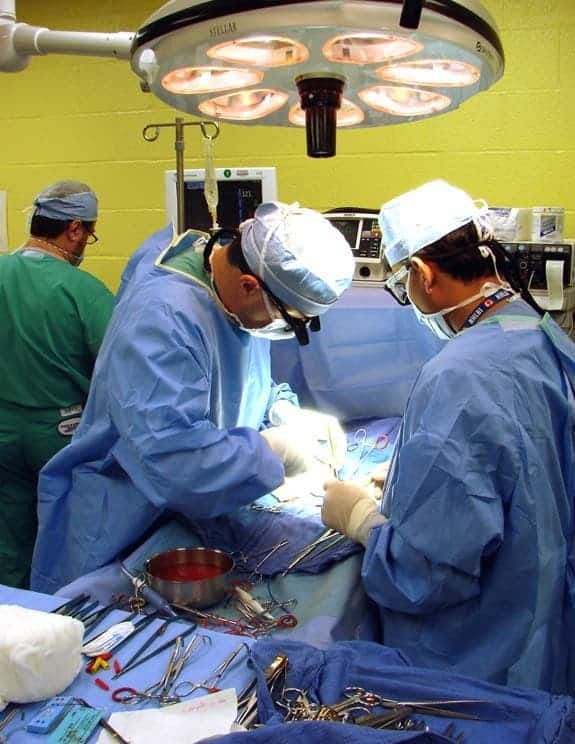
While most of the hype is centered around biotech efforts that try to engineer human organs from scratch in the lab, a better idea might be to grow human-compatible organs in foreign hosts. Researchers at the National Heart, Lung and Blood Institute (NHLBI) of the National Institutes of Health genetically modified pig hearts with some human genes then grafted these to the abdomens of baboons. The baboon still kept their original hearts, while the pig heart would only sag by their abdomen. So, we’re not yet seeing a primate functioning with a pig heart, but that’s the next obvious step. What’s important is that the pig organ wasn’t rejected and if the researchers’ efforts fall through, hybrid organ transplants might become extremely common. People often call each other pigs. Might as well be one, in heart.
The researchers experimented with different degrees of genetic engineering, so they bred piglets with various genes. The priority was to ensure biocompatibility with baboon host, so most of these genes when activated prevented certain enzymes from being produced. Other gene alterations kept the blood from clotting – another common issue. The most successful model, however, had the human thrombomodulin gene added to their genomes, whose expression prevents clotting.
[ALSO READ] Heart injected with liquid metal imaged with unprecedented detail
While the average survival of the other groups were 70 days, 21 days and 80 days, the thrombomodulin group survived an average of 200 days in the baboon abdomen. And three of the five grafts in the group were still alive at 200 to 500 days since their grafting, when the study was submitted for review. The paper was eventually published in The Journal of Thoracic and Cardiovascular Surgery.
Now that the researchers proved that there’s a reasonably stable configuration that doesn’t become rejected by the host, the researchers plan on taking a leap and transplanting the pig hearts into the baboon or some other primate host. The ultimate goal is to have these hybrid organs transplanted into human patients. There are thousands of people in need of heart transplants in the US alone, yet the demand is much higher than the supply. People are dying on the waiting list, and there many, many more if you consider liver, kidney and other organ transplants.


